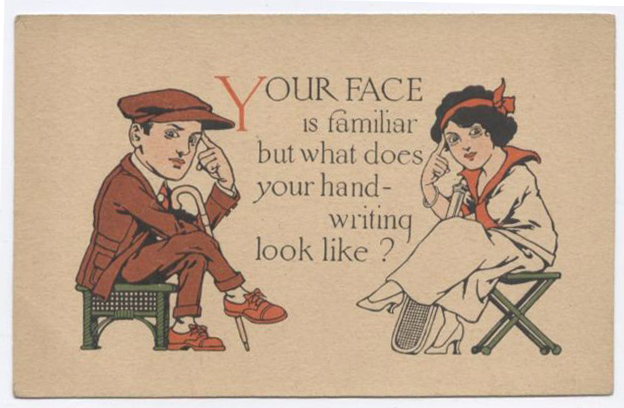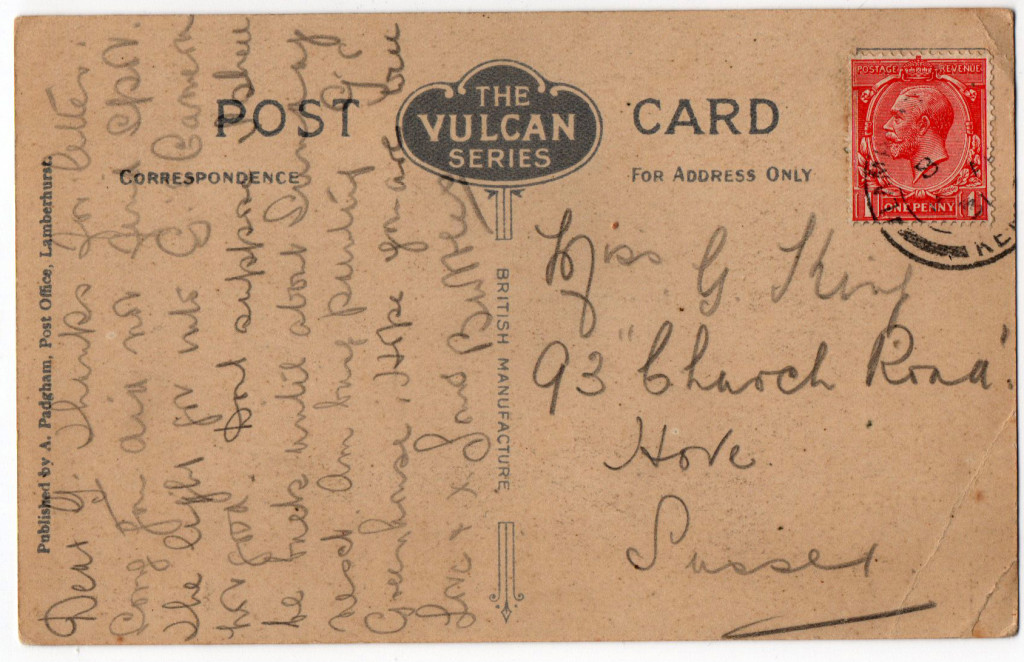“Here’s a thing. You’re driving down an Indiana track when out of nowhere comes a tractor into the side of your Subaru. How do you exchange details? Neither of you have ever been able to write anything but your own names. The farmhand don’t be holding with them thar smart phones nor with that new-fangled internet. (Or he does, but the battery on your smartphone has died to death—take your pick of disastrous scenarios). So there you stand, helpless in an Indiana field trying to work out which way up to hold a pen…”

bove is an extract from Philip Hensher’s book The Missing Ink, a brilliant and humorous book that a looks at the historical and cultural events as well as the people that have shaped our handwriting styles and attitudes towards handwriting. In this extract, Hensher is envisaging a scenario of a world in which people can no longer write and the ensuing chaos. More specifically, Hensher is referring to the comments made by American psychologist Dr. Hamilton, who, in 2001 suggested that in this increasingly digital world that it is only logical to teach children to write just their own names in joined up handwriting. This perceived need to ditch hand writing skills is often mooted as being progressive in today’s fast, hi-tech world, and it is obvious that writing documents by hand is no longer done with the frequency it once was, nor is it the cultural activity it once was, but it is easy to imagine the scenario that Hensher describes. Handwriting was and still is an extremely convenient and effective method of immediate communication and serves as an aide memoire.
Being I graphophile I am, of course, extremely biased, some while ago I wrote a post about my ongoing fascination with the act of handwriting, be it everyday handwriting or measured calligraphy.
Handwriting is still being rigorously taught in primary schools. My own children are currently being taught an attractive, seemingly easy to produce, highly legible script. Therefore if it’s still being taught, the UK education system obviously places a high value upon it. And, if we are going to write, there is unquestionably a need for the result to be legible as this rather shocking report demonstrated from 2006, when The National Academies of Science’s Institute of Medicine (IOM) reported that doctor’s poor handwriting could be responsible for the deaths of around 7000 people annually! As recently as October, 2013, a doctor’s poor handwriting was misread by nurses, leading to staff administering a fatal overdose of medication. So, it is a fact. In some instances—and not that rarely it would seem—poor handwriting can kill! 7000 preventable deaths per year means these are not isolated cases. The logical argument would perhaps suggest that such vital communications should be produced in typed print—or at least for professionals to remedy their poor handwriting.
In terms of the volume of handwritten communications, Radio 4’s You and Yours (December 2013) mentioned that at Christmas, more handwritten mail is sent than at any other time with the Christmas period seeing some 58 million items were sent per day. Thousands of these are addressed by hand which requires a staggering 3000 specialist staff are employed to decipher handwriting. So even if we’re not penning long letters, we still write our Christmas cards and hand write the addresses.

People have bemoaned the decline in handwriting and its standards for decades. In 1956, Englishman, Reginald Piggott conducted a survey of handwriting, and after requesting samples of the public’s handwriting and receiving many thousands of samples he categorised them fastidiously into style, pen type, occupation and amongst his conclusions was that it wasn’t doctors who have the poorest handwriting but scientists and engineers, and it was artists and company directors who had the most legible. Make of that what you will.
Is handwriting likely to be a lost art to the digital world? I don’t think so, I suspect that instead it might simply become less legible as sustained practice dwindles.
To consider how society’s attitudes have changed towards handwriting as a part of culture, I’d like to conclude with some insightful comments of Thomas Hill (1832-1915). Hill’s Manual of Social and Business Forms published in 1888 gives some pretty good reasons for producing good handwriting. The first of which probably resonates with most graphophiles.
Because, 1st. Good penmanship of itself adds greatly to our happiness. The consciousness to the lady or gentleman of being able to write a letter that shall win the admiration and praise of the friend to whom it is written is a source of unspeakable pleasure to the writer, and to possess this ability throughout our lifetime is to be proficient in an accomplishment which adds to our happiness, as does excellence in oratory, painting or music. Good writing is a fine art, and is to the eye what good language is to the ear.
2nd. Good writing is of great benefit to us pecuniarily. The person who may apply for a situation as teacher, clerk, or any position where intellectual ability is required, finds a beautifully written letter the best recommendation that can be sent when applying for that position. Hundreds of instances are on record, many doubtless within the knowledge of the reader, where lucrative situations have been obtained through good penmanship, that could never have been secured had the applicant not had a good handwriting.
And, 3rd. A mastery of the art of writing is of great service to us intellectually. Persons who can write well, taking pleasure in the practice, will write more than they otherwise would. Every time they write a word they spell it, and thus improve in spelling. Every time a sentence is written, an application is made of grammar; and thus knowledge is obtained of how to speak correctly. The subject they write about, they become familiar with; and thus, in the act of writing, they are intellectually improved. The most intelligent and influential in any community are those who can express thought most easily and correctly on paper.
References.
Vines, Gail, The Big Scribble, New Scientist. June 2005
Piggott, Reginald, Handwriting A National Survey. George Allen and Unwin Ltd, 1958
Sassoon, Rosemary Handwriting of the Twentieth Century. University of Chicago Press, 2007
Hensher, Phillip, The Missing Ink: The Lost Art of Handwriting, and Why it Still Matters Macmillan, 2012
Florey, Burns Kitty, Scribble & Script. The Rise and Fall of Handwriting, Melville House Publishing, 2009
BBC, Radio 4, You and Yours. 11/12/13

